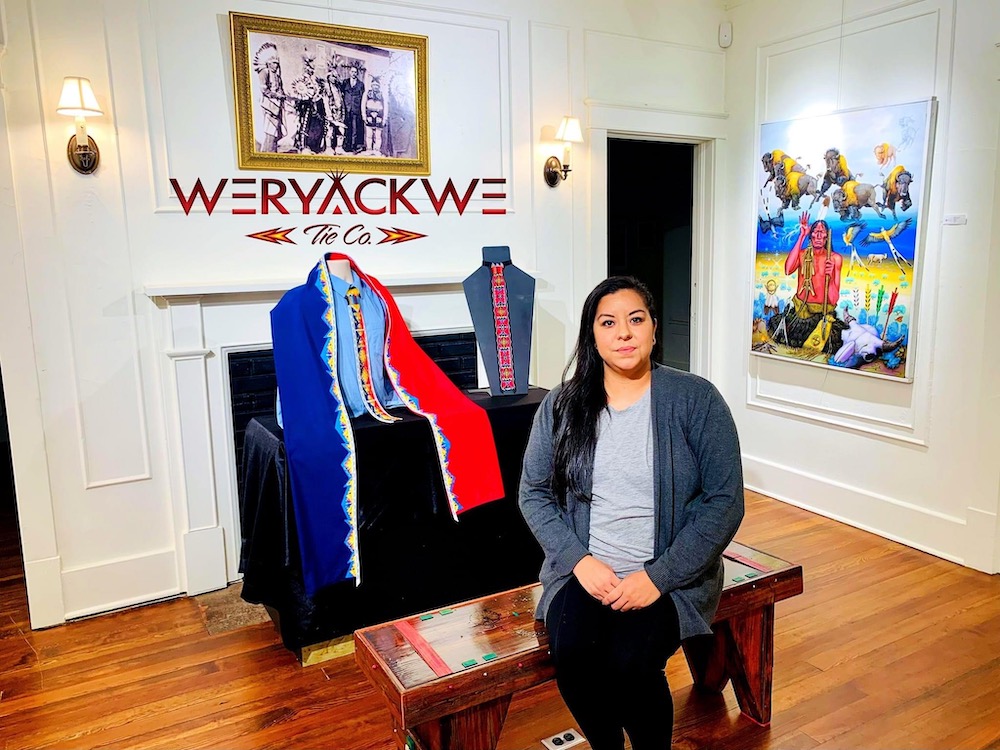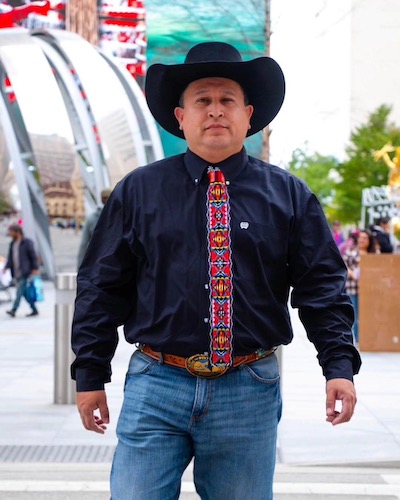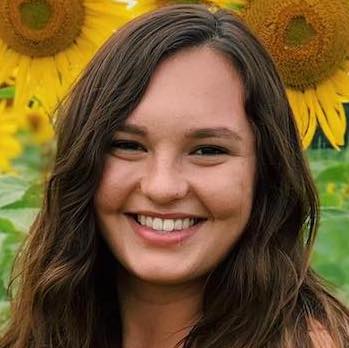
- Details
- By Kaili Berg
- Indigenous Entrepreneurs
Dancing at powwows and seeing her dad heavily involved with Native American ceremonies when she was growing up, Amanda Wilson (Comanche/Quapaw) recognized that there was a lack of Indigenous men’s fashion.
Wilson went home and decided to make her father a necktie to wear. Once the word got out, demand for her products took off.
Today, Wilson is the artist and entrepreneur behind the Apache, Okla.-based Weryackwe Tie Co., which features eye-catching, Indigenous-inspired ties for any occasion.
“I now have business men, councilmen, and even non-Indigenous people wear my ties. It is not just a traditional piece of clothing, but is also contemporary and meshes well with any look you are going for,” Wilson told Tribal Business News.
The company offers a wide range of bow ties and full appliqué neckties made with materials like sweetgrass and even faux alligator skin all tied together with different colors and patterns. Many of the ties sell between $25 to $315 and can be custom-ordered and tailored to any needs.

“There are a lot of fashion designers out there creating ribbon skirts and women’s items. I felt the need that our men really needed a nice light to shine on them and also need to be taken care of as well,” said Wilson.
That idea of leaning towards menswear is helping Wilson build the Weryackwe Tie Co. amid a recent surge of men's apparel over the past three years. The $504 billion men’s apparel market is expected to grow to $643 billion by 2028, according to industry experts.
Wilson and Weryackwe Tie Co. and are still early in their journey. She runs the business from her home in Apache and sells her Indigenous-inspired ties via her website and social media platforms. A stay-at-home mom, Wilson handles everything from creating designs and cutting fabric, to packing orders and shipping them. She also handles the sales, marketing and promotion amid taking care of her kids and creating plans to scale the business. She’s planning to expand to a brick-and-mortar retail outlet in the near future.
“I am hoping to get a storefront soon where people can come in and try on my pieces or have (a tie) custom-made for themselves,” Wilson said. “That is something that is currently in the works and I am excited to start that adventure.”
Wilson recently took a small business class that the Comanche Tribe hosted, where she learned about options for Native American business loans and grant opportunities.
“It has been a whole learning process to see how others have started their business,” she said, crediting the tribe for giving her a lot of the information she needed to get my business rolling.
Access to the right financing opportunities has helped Native American entrepreneurs like Wilson expand their businesses. Approximately 1.2 percent of U.S businesses are actually owned by Native Americans and contribute $33 billion to the U.S economy every year, according to U.S. Census Bureau data.
With the Indigenous fashion market on the rise, Wilson likes to get creative with her marketing, while also remaining authentic and working within the community. She only uses Indigenous models, photographers, and videographers to promote Weryackwe.
“This actually started because a family friend gave me the opportunity to use her as a model for a video shoot to promote my company. From there, we asked a few other powwow friends to come model for us and connected with videographers and photographers. I like to keep it Indigenous,” Wilson said.
While her circle of creatives are all Indigenous, Wilson does want to show the non-Native world Indigenous culture and help develop an appreciation for Native ingenuity and values.
“In the end I really want non-Indigenous people to grasp our culture and fashion,” she said. “All my ties are an art piece and a high-end product because these are our designs and our ways.”
